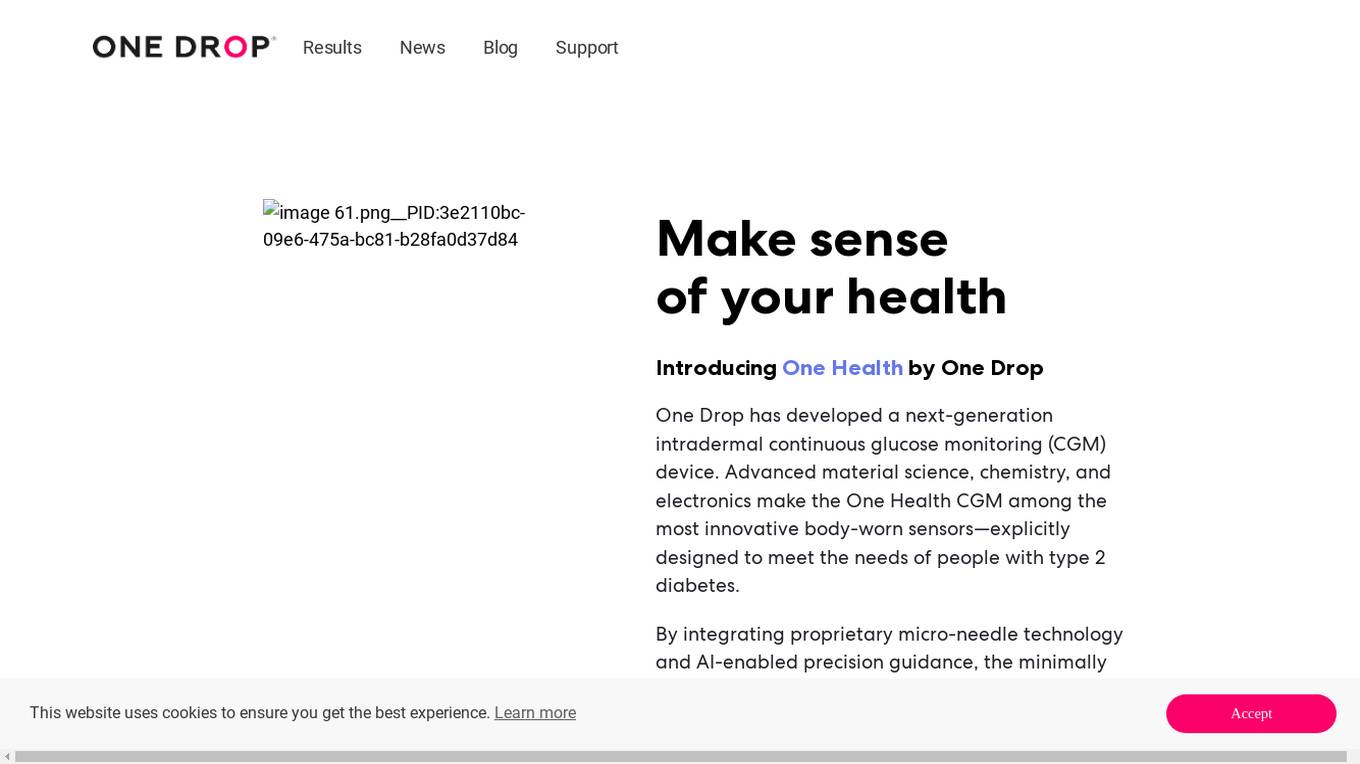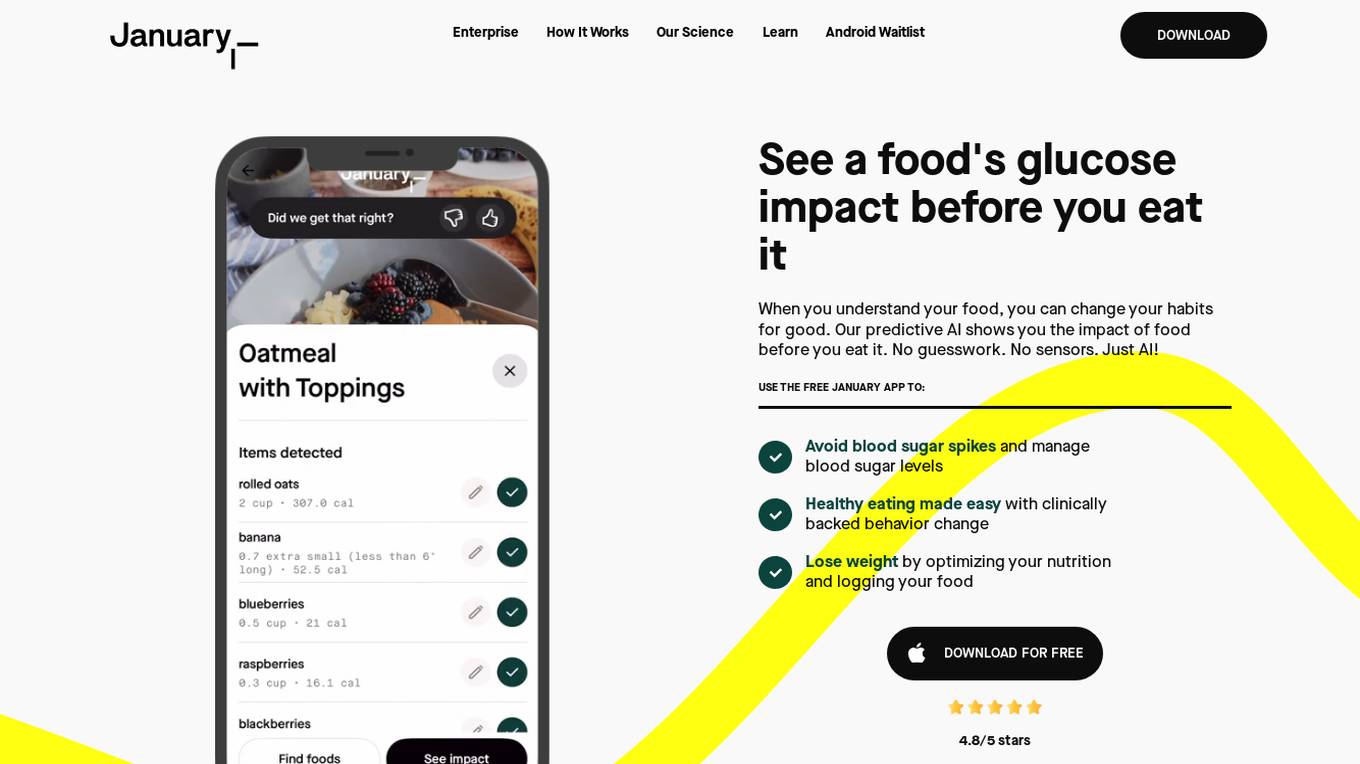Best AI tools for< Glucose Monitoring >
Infographic
2 - AI tool Sites

One Drop
One Drop has developed a next-generation intradermal continuous glucose monitoring (CGM) device. Advanced material science, chemistry, and electronics make the One Health CGM among the most innovative body-worn sensors—explicitly designed to meet the needs of people with type 2 diabetes. By integrating proprietary micro-needle technology and AI-enabled precision guidance, the minimally invasive One Health CGM will deliver pain-free, needle-free wear and unprecedented access to a population currently underserved by CGM.

January AI
January AI is a free health app that utilizes predictive AI technology to help users monitor their blood sugar levels and make informed decisions about their nutrition. The app provides real-time insights on the glucose impact of various foods, offers nutrition facts, and suggests healthier alternatives. Founded by Dr. Michael Snyder and Noosheen Hashemi, January AI combines metabolic science with groundbreaking AI to empower users to optimize their nutrition and manage their blood sugar levels effectively.